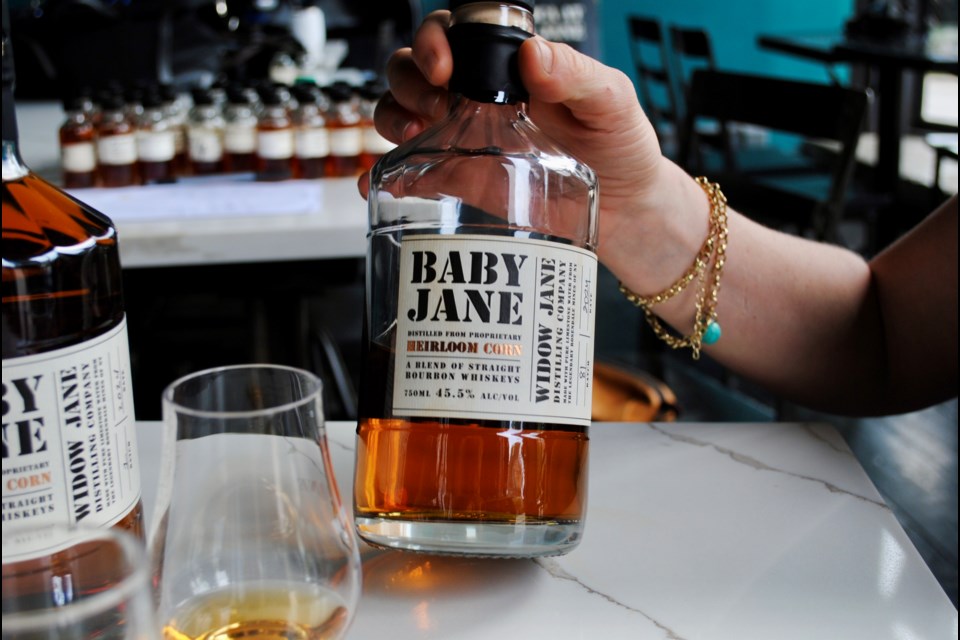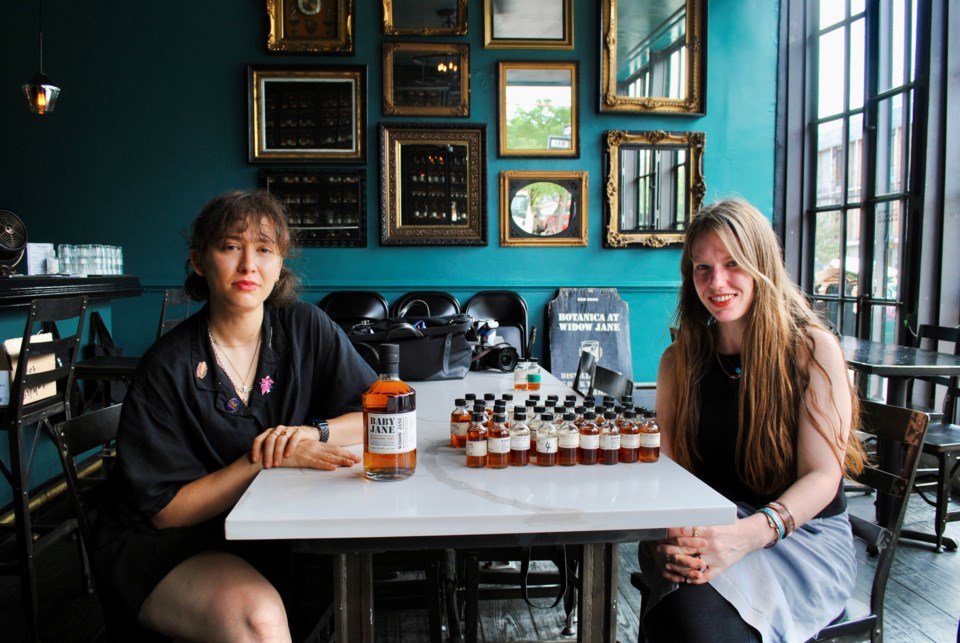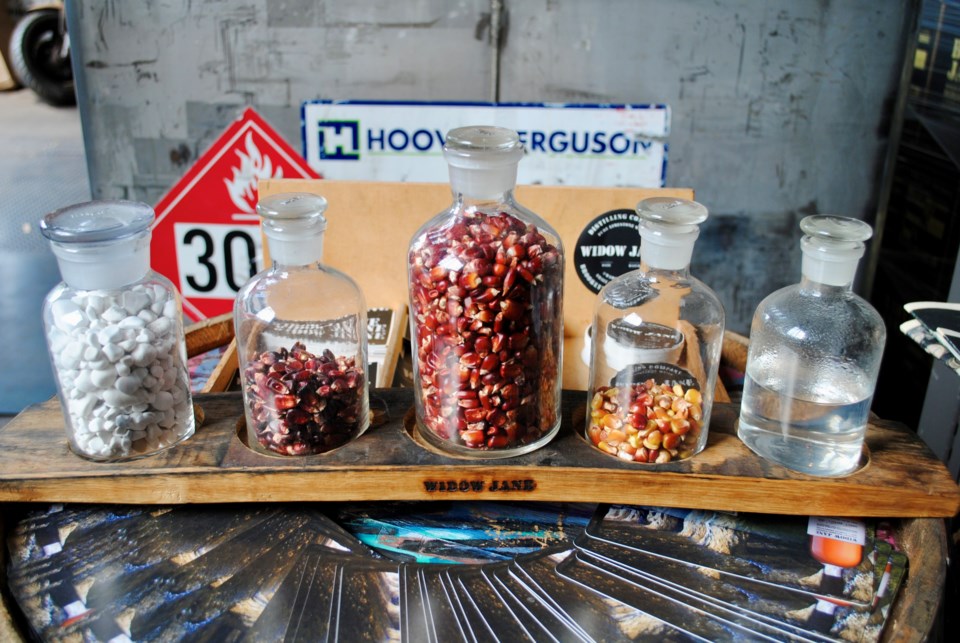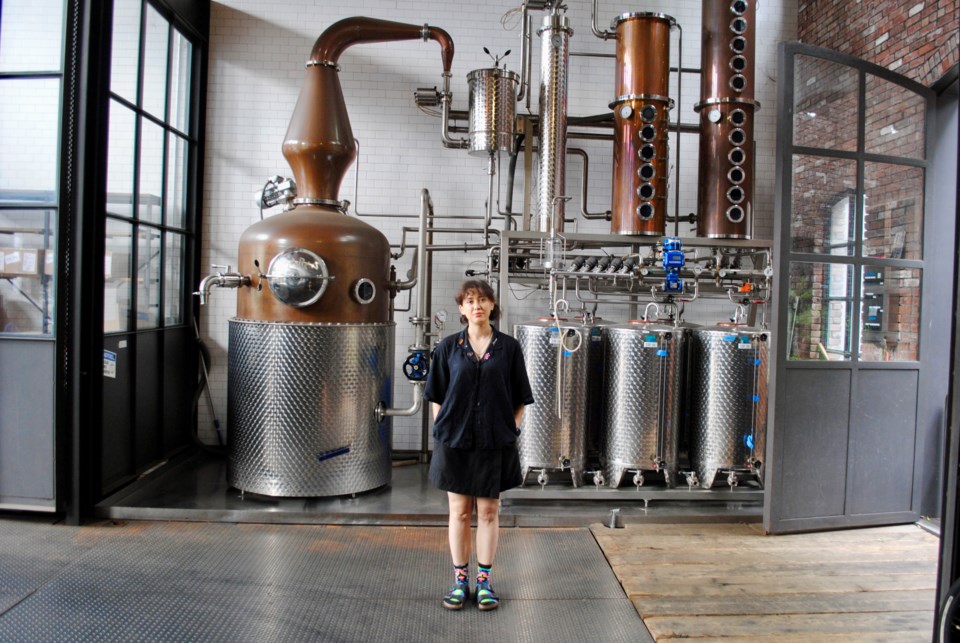The seeds for Baby Jane, a new heirloom corn-based bourbon, were sown in 2012.
Back then, Red Hook’s Widow Jane distillery also doubled as a “beans-to-bar” chocolate factory, and Michele Clark and Sienna Jevremov had just started their first jobs at the distillery, keen to work their way up the ranks.
The team wanted to create its own bourbon, using a proprietary strain of heirloom corn. To make it, they would need to blend several types of non-genetically modified heirloom seeds, which are usually family-owned and difficult to get your hands on.
“If you call it the seed bank, which I did — every single one in the country — they only release one- or five-pound bags of seed to you,” said Clark, who is now vice president of operations at Widow Jane. “So you have to get started on a small scale, and that's what we did.”
It took three years of planting in a field owned by farmer John Gill in Hurley, N.Y. to create the new blend. Gill agreed to use two fields for experimentation, planting two varieties of corn called Bloody Butcher and Wapsie Valley and allowing them to cross-pollinate, thereby creating the ideal mixed kernel.
“There was this beautiful sunburnt orange color that had been created between the two fields,” Clark said. “So we plucked those kernels off that corn, put it in a paper bag, and from that moment on, there was no doubt about what the name of this strain was gonna be. It was obviously our baby.”
Once the Baby Jane corn had been perfected, Jevremov, now the head distiller, was able to start playing around with the distillation process. To make bourbon whiskey, distillers take grain (usually consisting of corn and other grain products) and make a mash, introducing yeast and water at high temperatures and letting the mixture ferment into alcohol. After that, the mixture is drained and distillation begins, wherein the liquid is boiled to an evaporation point and those steamy molecules are allowed to drip back down into a liquid, creating an alcohol with a higher concentration.
“Essentially, we came to the conclusion that the best way for us to do Baby Jane was lower and slower cooks, just really allowing the corn to gelatinize and let the starches reach out and let the flavor come out,” said Jevremov.
The one-year-aged bottle of Baby Jane has been available since 2015; as of June, it is now joined by a six-year-old Baby Jane, made from a blend of bourbons produced in New York, Pennsylvania and Kentucky. The new Baby Jane is available for $50 per 750mL bottle, and Jevremov believes it’s one of the best-value bourbons on the market, given its quality and the care that goes into its bottling.
The new bottle is custom-made, with a beautifully ridged neck that mimics the cladding on New York water towers. The label purposefully doesn't wrap around the whole bottle, sneakily revealing a design through the glass: the abandoned limestone mines in Rosendale, N.Y., where Widow Jane sources their water.
And how does Baby Jane taste? In a word: complex.
Most whiskeys have monotone tasting notes, Clark explained, but with Baby Jane, the notes are more dynamic.
“Even with the tasting notes, there's complexity,” she said. “Like: it's peach compote, or it's cafe au lait, 'cause it's peach that's been cooked down and caramelized, or it's coffee that has this creaminess to it. Or it's a soft pretzel, chewy with salt on top, you know? It's kind of like all the notes we're finding are a whole meal in itself.”









